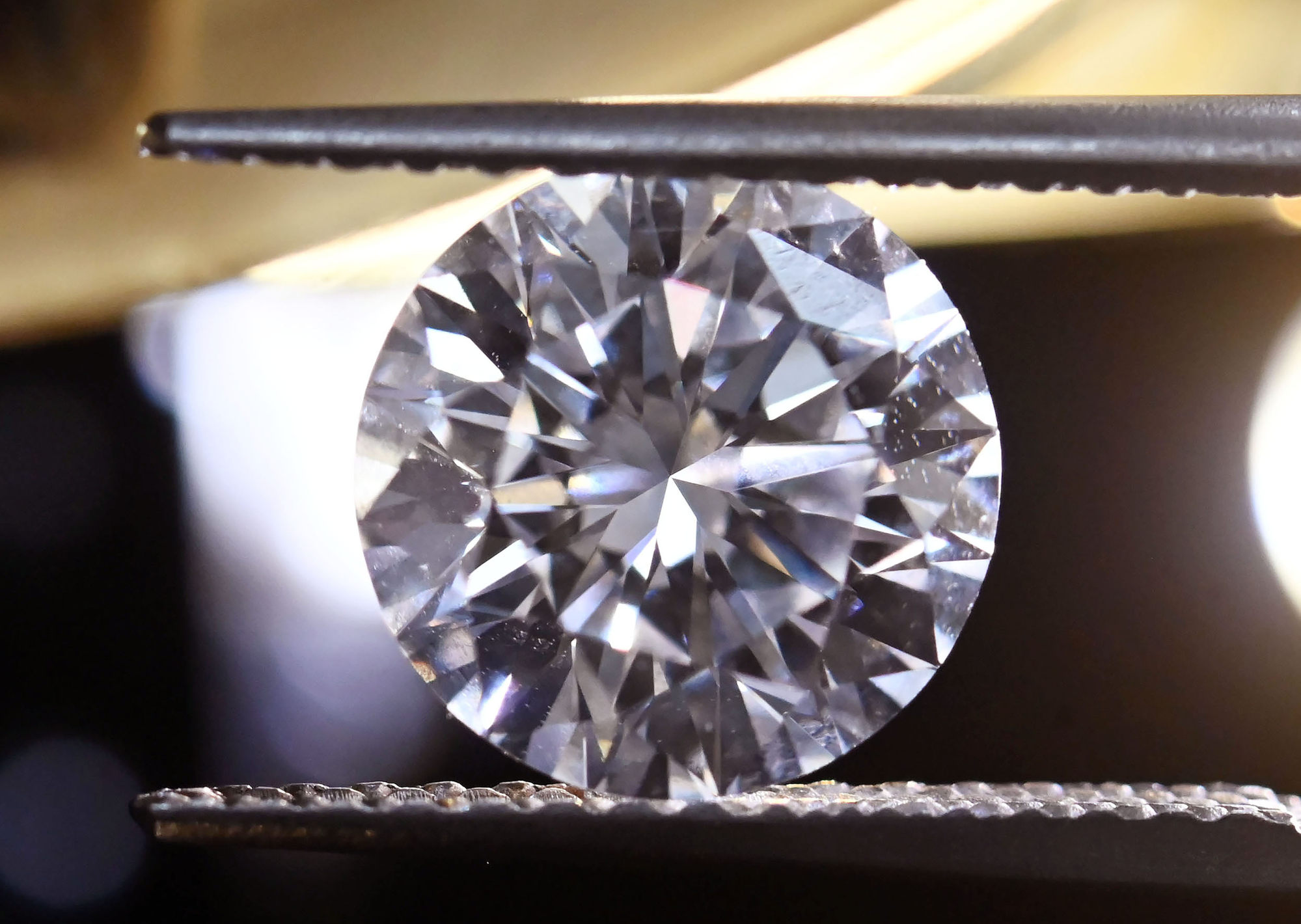
Lab-grown or natural diamonds? Man-made gems are cheaper – and that might explain why more young people are choosing them over mined ones
- One in 10 pieces of diamond jewellery sold now contain lab-grown diamonds, and young people feel less stigma when buying one, an expert says
- Interest in lab-grown diamonds has less to do with personal ethics and more to do with how prices are too high for natural, mined gems, he adds
For California-based engineering technician Heather Lim, the choice to select a lab-grown diamond as the centre stone for her engagement ring was an easy one.
“When my then-fiancé, now-husband, asked me what I wanted in an engagement ring, I made it pretty clear that I didn’t want a natural diamond that came from a diamond mine,” Lim says.
“For me, there’s too much baggage associated with a diamond that comes from a mine, and that’s all I’d be thinking about every time I looked at it on my hand.”

New York-based industry analyst Paul Zimnisky specialises in tracking global diamond supply and demand. He estimates that lab-diamond jewellery now makes up 10 per cent of the total market for diamond jewellery – with consumer demand particularly strong in the US, though less in China.
Analysts from market research company Allied Analytics LLP estimate that the global lab-grown diamond market will reach almost US$50 billion by 2030.
Diamonds aren’t just for special occasions – some are meant for every day
While consumers such as Lim select a lab-grown diamond based on personal principles, Zimnisky argues that the real surge in interest in lab-grown diamonds has less to do with an individual’s ethics and more to do with how diamond prices are affecting consumers cost-wise. Like most goods, the cost of buying an engagement ring has risen over the last year as inflation rates around the world have rocketed.
“The US remains by far the largest consumer of man-made diamonds, representing close to three-quarters of global demand.”

“Our client base is mostly made up of this [current] generation who are less attached to traditions and are more focused on practicality when making financial decisions,” says Shalom Khotoveli, the co-founder of New York-based Keyzar Jewelry.

Several retailers interviewed agree and refuted the notion that a lab-grown diamond’s reduced resale value, as opposed to the resale value of a natural diamond, was a significant factor in a consumer’s decision-making.
“Lab-diamond detractors constantly talk about how mined diamonds resell at higher prices, but who cares when reselling a mined diamond will only fetch about 50 per cent of what you paid anyway? And who wants to buy only with selling in mind?” says Kristy Cullinane, co-founder of lab-grown diamond jewellery company Plum Diamond.

“The couples I work with want a lifelong heirloom that they can feel great about, and lab diamonds check all the boxes without making any compromises.”

UK-based Alastair Smith, the founder of engagement ring retailer Ringspo.com, says that about 30 per cent of his inquiries are for lab-grown diamond rings, but it is not because consumers are shrinking away from the cost of a natural diamond.
“Most people don’t choose lab-grown over natural to reduce their engagement ring budget,” Smith says. “Instead, they are choosing lab-grown over natural because it delivers more carat weight and higher colour and clarity grades for their original budget.
“They aren’t looking to spend less, they’re looking to get more.”

But what qualifies as “more” varies from person to person. For Lim, “more” was the ability to be flexible with design, thanks to the savings her fiancé made by choosing a lab-grown diamond.
“A bonus that choosing a lab-grown diamond gave my now-husband was the option to be more creative with the setting,” Lim says. “With the money he didn’t spend on a natural diamond, he put it toward the design of the ring, which to me, symbolised that he really cared and listened to what was important to me.”

For Lim, a natural, mined diamond was not even an option – and Smith says that just as many people fall into the opposite category.
“Those who are emotionally invested in a natural diamond usually won’t even consider a lab-grown stone, even if they are chemically identical and impossible to tell the difference with the naked eye,” he says.
At the end of the day, the emotional choices that surround the purchase of an engagement ring will ultimately sway consumers’ decision-making process, and it is up to brands to cater to a growing list of demands.

The act of giving and exchanging an engagement ring is a nerve-racking process and Andrew Wolgemuth, co-founder of bespoke engagement ring company Wove Made, says that remains true no matter what type of economy global markets are in.
“I believe that an engagement ring is a unique purchase for a couple and is relatively immune to market fluctuations,” says Wolgemuth. “Even in downturn economies, I find that couples still want to purchase a diamond that they are proud to give and know that their partner will be excited to receive.”
For Wolgemuth, the shift to lab-grown has less to do with the financial markets, and more about what matters to the couple. “Choosing a diamond is a very personal decision and every couple must weigh what is most important to them.”

And that is what Lim said mattered the most when it came time to choose her centre diamond.
“The idea of a lab-grown diamond appealed to me not only because of its origins, but because my husband and I both work in aerospace, and the idea that the thing that symbolises our union also represented our love of science was a really cool concept for both of us.
“Because that’s what you really want in an engagement ring. For it to symbolise a commitment and understanding on both your parts.”
